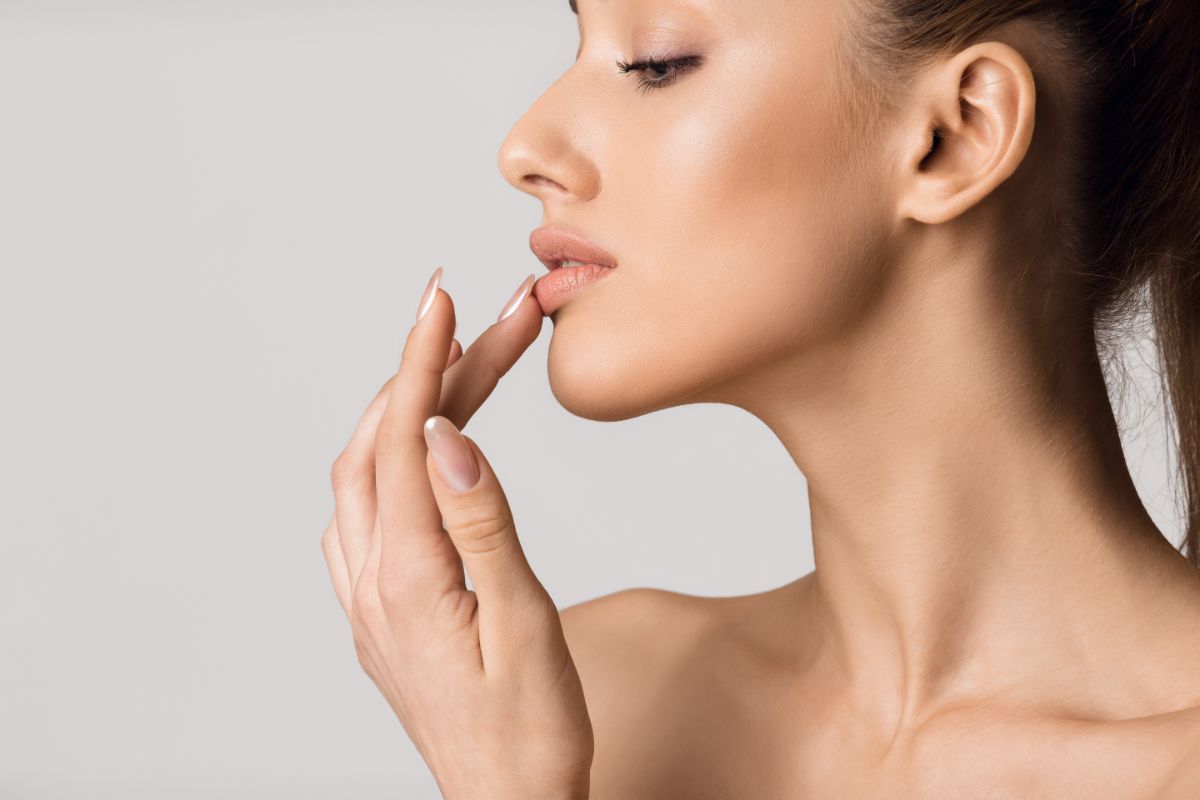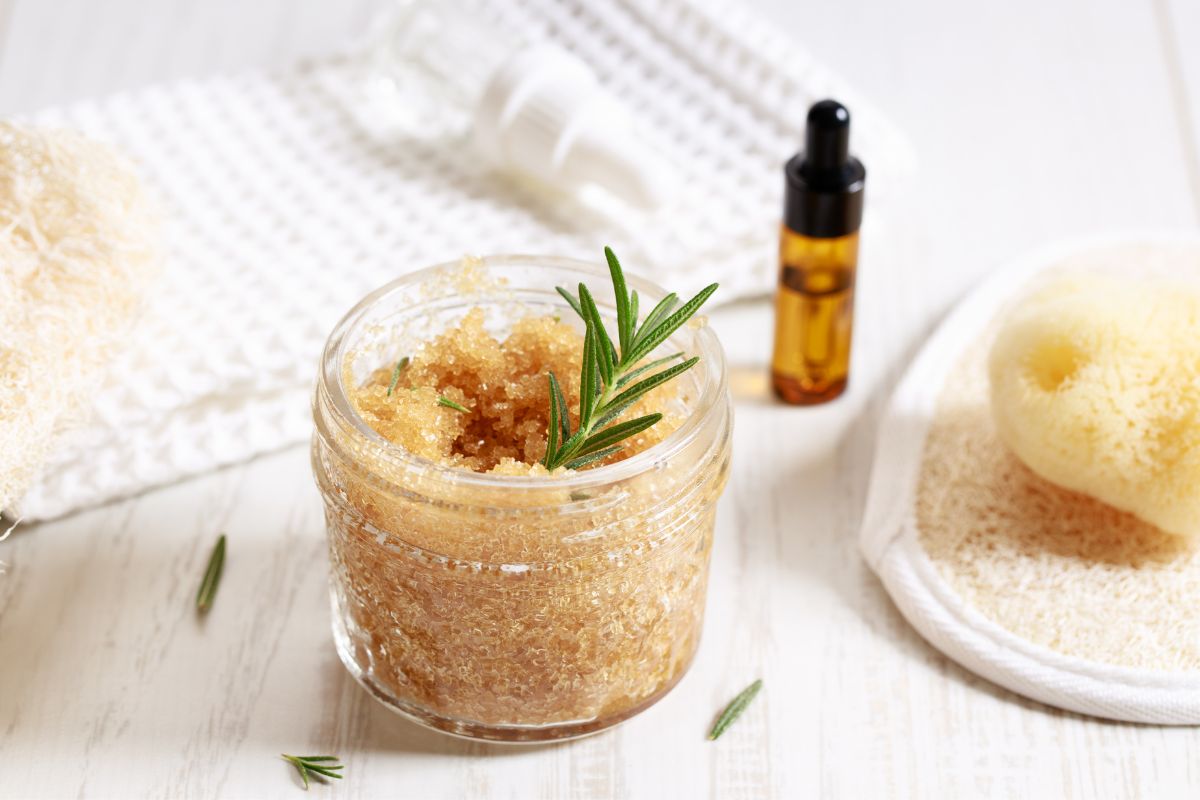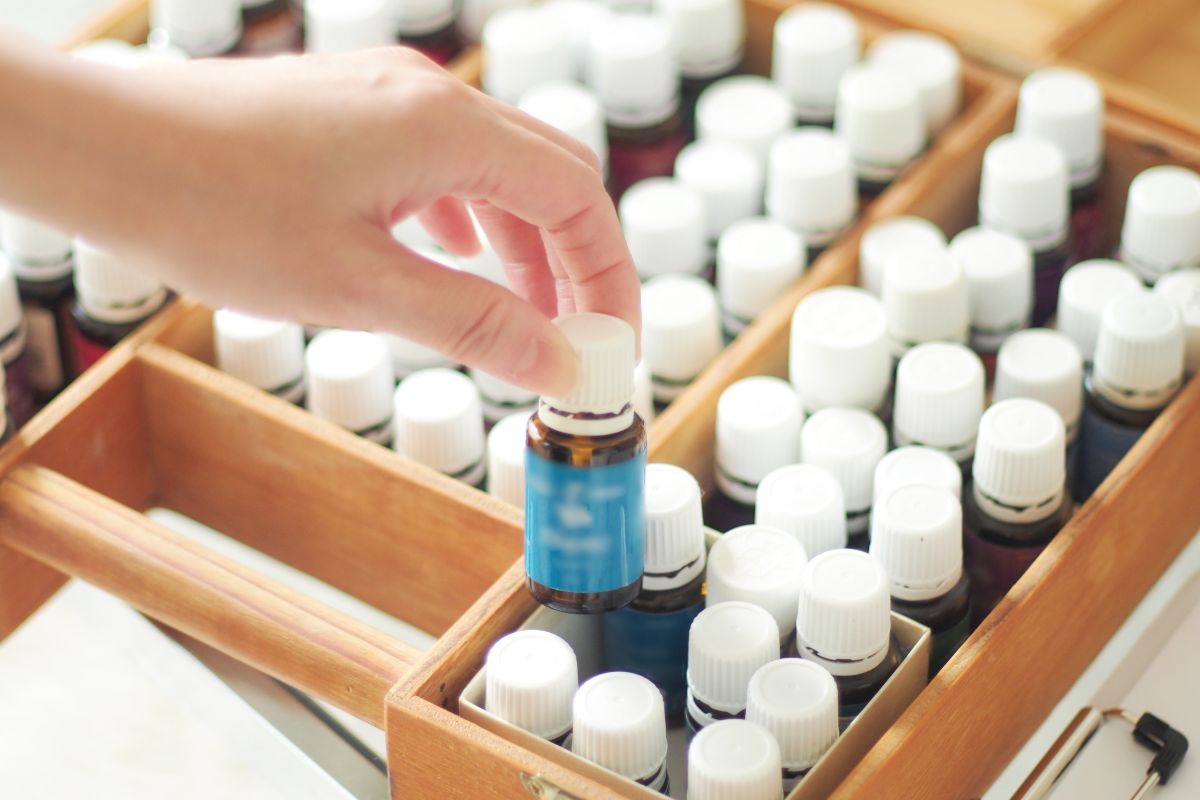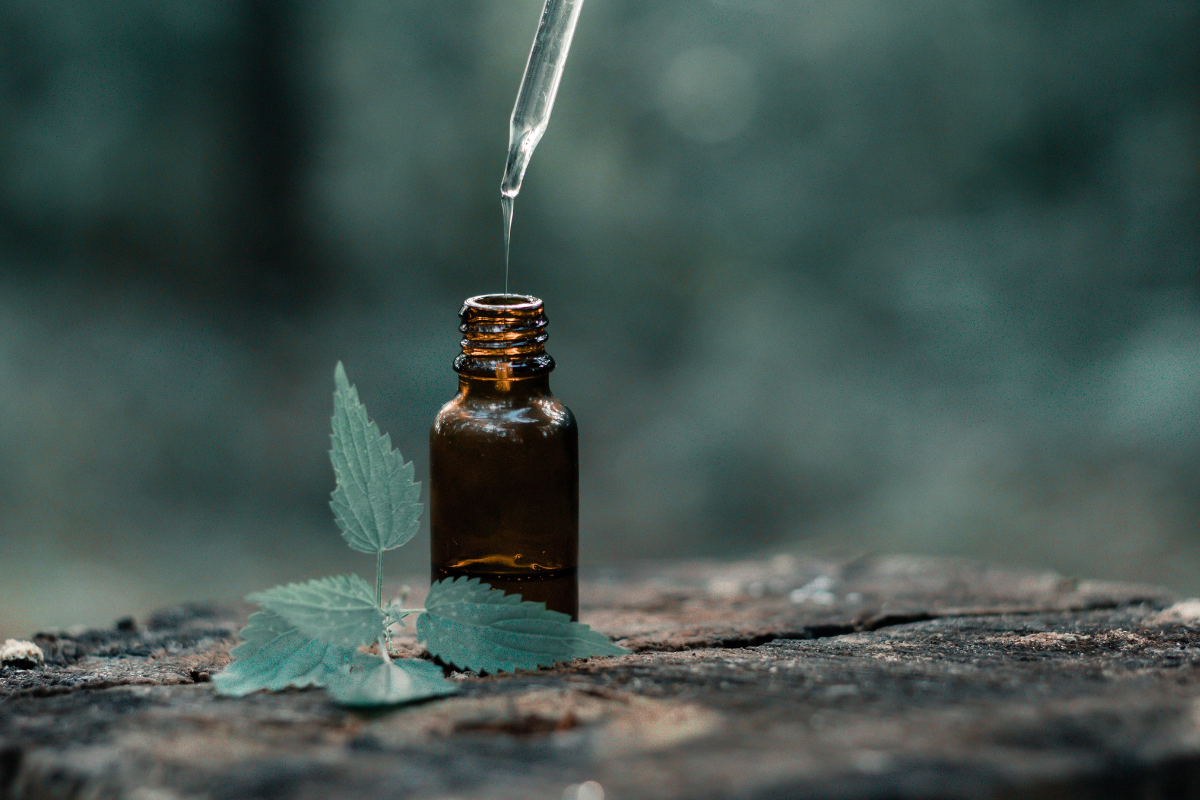Gua sha treatments involve sliding a half-moon-shaped stone over your face. When done correctly, the massage helps to improve circulation and encourage lymphatic drainage, leading to better skin.
Gua sha may have become more popular over the past few years, but the practice dates back centuries, with its roots in Traditional Chinese medicine.
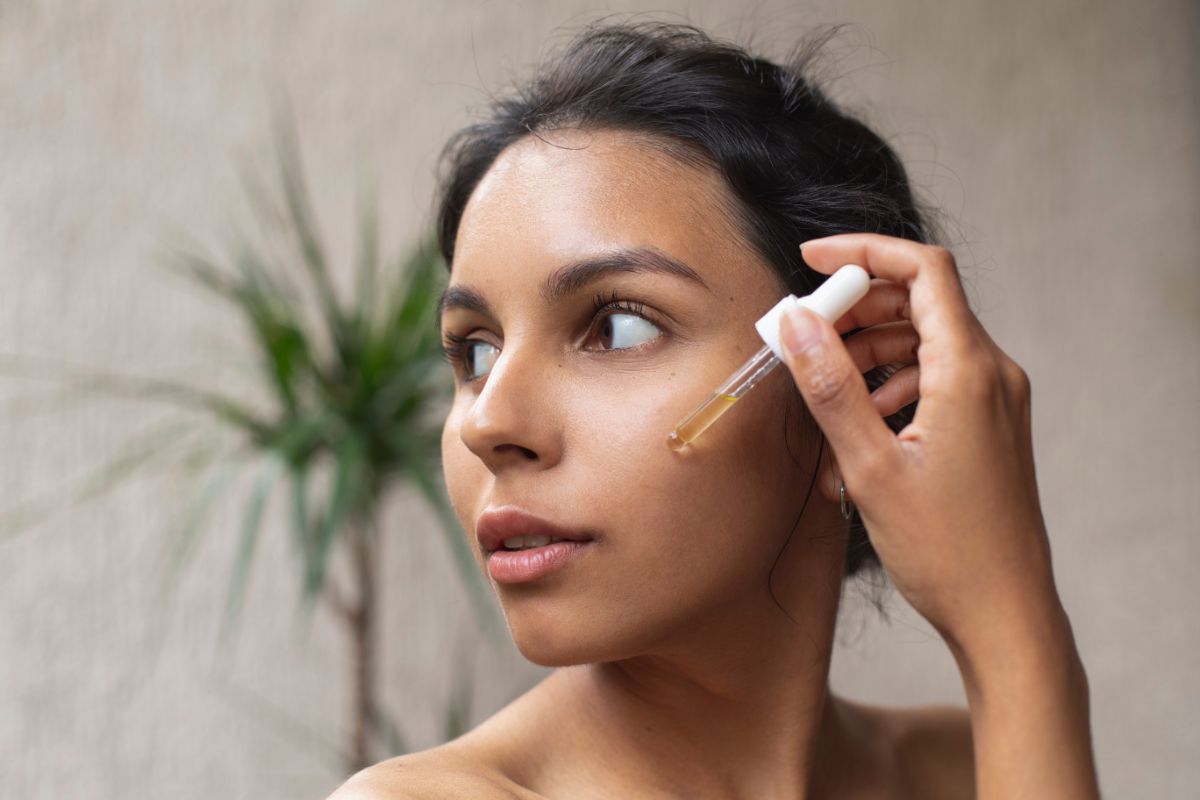
Gua sha cannot be performed on dry skin, as it needs to be able to glide over your skin easily.
Many people that use a gua sha apply oil to their face beforehand, but which oil is best for gua sha massage?
If you use a gua sha, it’s important to make sure that your facial oil is right for your skin type. If you use the wrong one, you may end up with worse skin than when you started.
You’ll find some of the best facial oils to use with your gua sha in this post. Whether you have dry, oily, or sensitive skin, you’ll find a range of oils that suit your skin type below.
You’ll also find a buying guide to help you when choosing a gua sha oil, as well as tips to help you when performing the massage.
Do I Need An Oil When Using A Gua Sha?
Gua sha should not be used on dry skin. Facial oil is necessary as it reduces friction, allowing the tool to slide over the skin without pulling, dragging, or an uncomfortable sensation.
Your oil needs to deliver enough slip so you can slide the gua sha over the contours of your face.
Some choose to use a serum instead of an oil, but serums aren’t slippery enough for the process, so it’s best to use an oil.
People with acne or oily skin may be reluctant to use an oil, but as long as you use a non-comedogenic product, you should be fine, as these won’t clog your pores.
The Best Oil For Gua Sha Massage
Here are some of the best oils to use for gua sha, depending on your skin type.
Dry Skin
If your skin is dry, you should opt for an oil that will alleviate any skin issues, like flaking, fine lines, dehydration, and wrinkles.
Hydrating oils with a richer finish will help smooth your skin, making it feel plump and nourished.
Coconut Oil
Coconut oil is a great choice to use with gua sha, as it is packed with fatty acids. This helps moisturize the skin and prevent it from drying out.
Coconut oil also has anti-inflammatory and antibacterial properties that can soothe irritated skin, making it ideal for anyone with sores or broken skin.
Sweet Almond Oil
If you have particularly dry skin, sweet almond oil is a thick, nourishing, and moisturizing oil.
The oil is full of vitamins E and A which help hydrate the skin. As it is so rich, sweet almond oil is often used in massage.
Sweet almond oil also has antioxidants that can protect your skin against damaging free radicals.
Together with its omega-3 fatty acids, the oil may even reduce the skin’s sensitivity to the sun’s UV rays (but you should always wear sunscreen, regardless!).
Marula Oil
Marula oil is sourced from the South African marula fruit tree. The skin soaks up this oil easily as it is very lightweight.
Marula oil contains palmitic, stearic, oleic, and linoleic acids that can soothe redness and hydrate the skin.
Marula oil also contains omega 3 and omega 6 fatty acids. These support regular skin function and help maintain healthy skin.
Oily/Acne Prone Skin
Acne-prone and oily skins usually secrete more oil than other skin types. These skin types should avoid heavy or comedogenic oils, as these can clog pores and cause more spots.
Oily or acne-prone skin types should look out for hydrating, lighter, and non-comedogenic oils.
Tea Tree Oil
Tea tree oil has always been a common oil in the beauty industry, thanks to its anti-inflammatory, antibacterial, and antifungal effects.
Tea tree oil is great for clearing up blemishes and acne, making it great for oily skin types that often experience breakouts.
Even though tea tree oil is effective, it is very strong. Applying it directly to your skin can lead to irritation and itchiness.
If you want to use tea tree oil, always dilute it with carrier oil, like grape seed oil. This will make it suitable to apply directly to the skin.
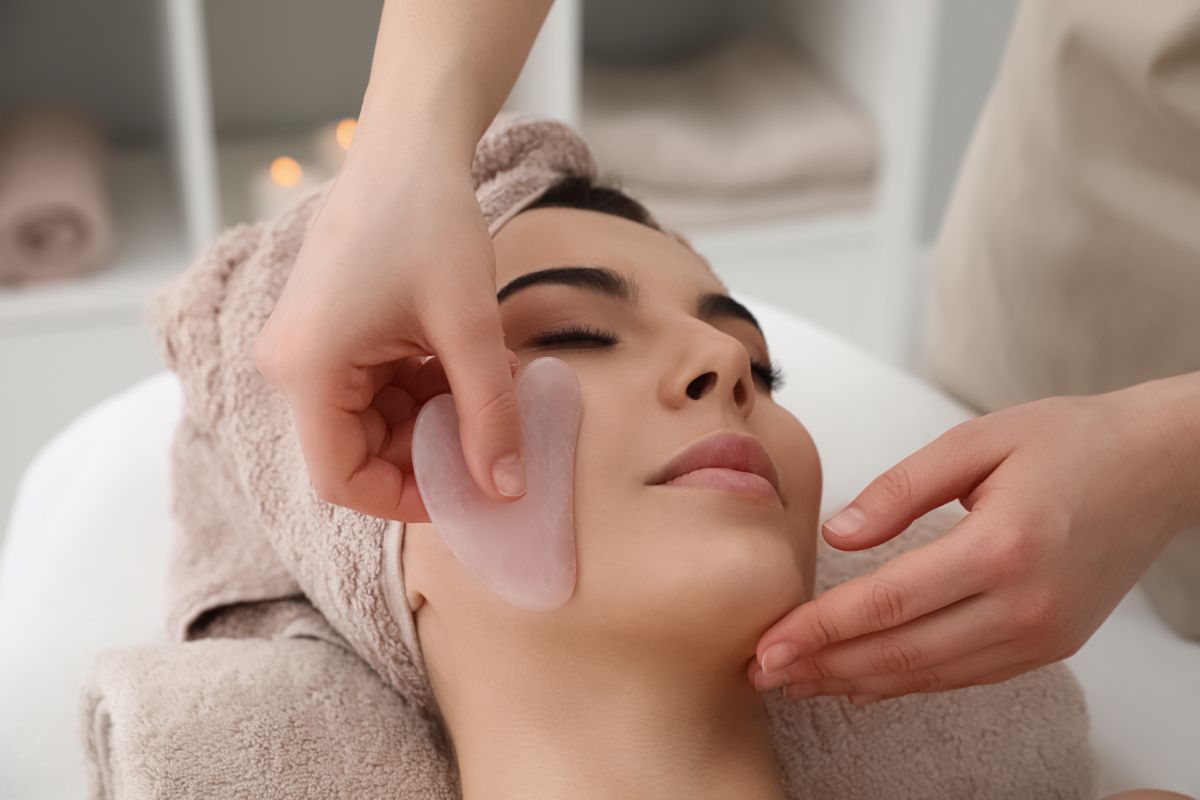
Grape Seed Oil
This lightweight oil has a thin consistency that sinks right into the skin, making it ideal for oilier skin types.
Grape seed oil is full of antioxidants and vitamins that help to nourish the skin without making it oily.
Grapeseed oil is also anti-inflammatory, so it’s a good choice for anyone dealing with redness, itching, or burning. Its antibacterial properties may also eliminate any bacteria which cause acne.
Grapeseed oil is nongreasy, but as it absorbs easily, you may need to keep applying it when using the gua sha tool.
Safflower Oil
Safflower oil is growing in popularity among gua sha users. It has several possible benefits when used with the tool, including decreasing inflammation, improving pain, and encouraging tissue healing.
Safflower oil also has anti-inflammatory properties that can calm down overactive skin. This may help spots, scars, and blackheads to heal at a faster rate.
The oil is also rich in linoleic acid, a substance that can regulate sebum levels in the skin.
This makes safflower a nice choice for oilier skin types that produce more sebum. This acid also helps the skin feel plump and moist, but as it is thinner and lighter, it won’t clog acne-prone skin.
Sensitive Skin
People with sensitive skin types may be reluctant to use a gua sha, but there are lots of oils that won’t inflame or irritate your skin!
The oils in this section have anti-inflammatory effects that can calm redness and alleviate the skin. They are also gentle and moisturizing, which is great when relieving irritated skin.
If you have sensitive skin, always carry out a patch test before committing to a new product or oil.
You can then see how your skin will react and decide whether you want to use the product.
Argan Oil
Argan oil is a great choice for sensitive skin. As it is non-comedogenic, it can be applied to a variety of skin types, particularly oily and sensitive skin.
Argan oil is full of antioxidants that have soothing effects. Vitamin E, linoleic acid, and omega fatty acids work to gently soften dry skin.
Some even use the oil to heal minor burns, thanks to its anti-inflammatory properties.
Most people tolerate argan oil well, but as noted above, sensitive skin types should carry out a patch test beforehand to ensure the oil is suitable for you.
Apricot Kernel
Apricot kernel oil is a lightweight oil that sinks into the skin easily. It soothes and protects the skin’s barrier, making it ideal for calming down irritated, parched, or generally sensitive skin.
Apricot kernel oil is mild enough to use on babies, as it is gentle and protective.
People often use the oil to soothe conditions like eczema, as it quickly sinks deep down into the skin’s bottom layers.
The oil also has antibacterial properties that can defend against environmental damage and heal imperfections.
It’s packed with unsaturated fats which can protect delicate skin from irritation and damage.
As apricot kernel oil is lightweight, keep the bottle on hand when performing gua sha. You may need to reapply the oil often to keep the skin slick.
Jasmine Oil
Jasmine oil is used in skincare products for its calming properties. The oil is great for sensitive skin types as it encourages wound healing and soothes inflamed skin.
It has antifungal and antimicrobial ingredients, like benzyl benzoate and benzoic acid. These can help heal cuts, sores, and lower your risk of infection.
Jasmine oil is also good for itchy, dry, or inflamed skin. It can soothe symptoms of skin conditions, like eczema or psoriasis.
The oil has a pleasant, natural fragrance that won’t cause irritation or exacerbate sensitive skin.
As it is lightweight, it sinks into the skin easily, but you may need to apply more than a few drops when using your gua sha to keep your skin slick.
Combination Skin
If your T-zone is oily and your cheeks dry, or if you have areas of dry and patchy skin, you have combination skin.
Combination skin types should avoid comedogenic oils, as these can clog the pores on your T zone. Look for lightweight, hydrating, and non-comedogenic oils that suit the different skin issues on your face (see also “Ultimate Guide On How To Use Frankincense Oil“).
Jojoba Oil
Jojoba oil is known for its healing effects, which is why it’s used to heal eczema and psoriasis symptoms. The oil can mimic sebum on your skin, helping to regulate sebum and oil production.
Jojoba oil won’t clog your pores as it is non-comedogenic. It’s also good for your skin’s dryer areas as it forms a protective barrier. This keeps water within your skin, preventing it from drying out.

Sunflower Oil
Sunflower oil is light, non-greasy, and non-comedogenic, so it won’t aggravate the oilier areas on your skin.
The oil is also full of vitamins and antioxidants, like vitamin E, which protect the skin from damaging free radicals.
Sunflower oil also contains linoleic acid, a substance that supports the skin’s capacity to maintain healthy moisture levels.
Its anti-inflammatory effects are also great for soothing the dryer areas on your face, like your cheeks.
Buying Guide
Things To Know Before Choosing A Facial Oil
Here are some things you should consider when choosing a face oil to use with your gua sha.
Skin Type
Different types of oils and blends are best for different skin types and issues.
For instance, rosehip oil is a nice choice for oilier skin, as it is non-comedogenic and won’t clog pores. Conversely, coconut oil is best for dry skin, as it is full of fatty acids that soothe dry skin.
If you’re unsure about facial oils, try out a few examples to find an oil that suits you. You can narrow down the choices with a little research, but you’ll need to test a few to see what works with your skin.
Active Ingredients
You can try and find products that are made with other extracts, like vitamin C, hyaluronic acids, or herbal extracts.
These can deliver other benefits, like moisturizing, brightening, or soothing the skin.
You can use carrier oils on their own, as they are full of antioxidants and fatty acids that are good for the skin.
Still, if you’re after a little more nourishment from active ingredients, you may want to try out some facial oils from a few skincare brands.
Consistency And Experience
Applying a facial oil is a sensory experience, particularly when applying it with a gua sha. Gua sha massage is a process that helps awaken your senses and skin.
Your choice of oil can also help with this intent.
For instance, does your facial oil have a nice fragrance? What about its texture, does it sink into the skin quickly or is it rich, nourishing the skin for a while after application?
Consistency is also important for another reason. If you’re using a gua sha in the morning, you may not want to use a rich oil, particularly if you’re using makeup during the day.
If this is the case, you may want to use a lighter oil in the morning and save heavier ones for the night.
How To Use Facial Oil With A Gua Sha
After you’ve chosen a facial oil, here’s a guide on how to use it with your gua sha tool:
- Apply several drops of facial oil, pushing the product into your skin as you do so. The skin should feel slippery, so avoid rubbing it in completely. Cover your face fully with the product, or just the areas you want to use your gua sha tool on.
- Use your dominant hand to hold the gua sha, then position it at 15 degrees to your skin. Start gliding the tool across your face, holding your skin firmly with your opposite hand as you do so.
- If your skin starts to soak up the oil, apply more oil to your face. The skin should always have enough slip for your tool to slide over the contours of your face. If the gua sha starts to tug or pull against your face, this is a sign to apply more oil.
Final Thoughts
Gua sha massage can have some amazing benefits, but it’s important to make sure that your skin is lubricated well before using the tool.
This allows the gua sha to glide over your skin instead of tugging or pulling on it as you go.
It’s important to choose a facial oil that suits your skin type, so depending on whether you’re dry, oily, sensitive, or combination, you’ll find a range of facial oils to try above.
Just remember to carry out a patch test if you have sensitive skin, as your skin may react differently to a particular type of oil.
Frequently Asked Questions
Do You Need A Special Oil For Gua Sha?
Facial oil is necessary for gua sha massage, as it keeps the skin lubricated, allowing the tool to glide over the skin without any issues. You don’t need any special oil for this, but make sure you use one that’s best for your skin type.
Oilier skins will need a lighter, non-comedogenic oil, while dryer skin will need a heavier one that nourishes the skin.
Can I Use Gua Sha Without Serum?
No, you should never use a gua sha on dry skin. The skin needs to be moist and slippery for the tool to glide over the skin.
If your skin is dry, the massage will feel uncomfortable and can cause irritation. Either use a facial oil, serum, or moisturizer before using your gua sha.
Should I Wash The Oil Off My Face After Gua Sha?
No, you don’t need to wash your face after using gua sha. If you do, you won’t receive any benefits from the skincare products you applied previously. However, it is important to clean your gua sha tool regularly.
After every use is best, as a dirty gua sha tool can lead to spots and imperfections on the skin.
- The Ultimate Guide to Aromatherapy Oil Uses: Transforming Your Daily Routine with Natural Scents - May 13, 2024
- The Benefits of Lemongrass Essential Oil for Dogs: A Natural Solution for Fido’s Wellness - May 13, 2024
- The Ultimate Guide to Choosing the Best Essential Oil Diffuser for Aromatherapy - May 8, 2024


